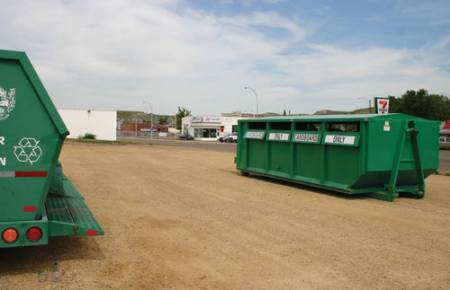
Contamination in the Red Deer River could be causing fish feminization according to a recent study done by researchers at the University of Calgary.
The focus of the study, published in the journal Environmental Toxicology and Chemistry, was on two rivers in the South Saskatchewan River Basin: the Red Deer and Oldman rivers, located in southern Alberta.
The study revealed a species of fish, the longnose dace minnow, has a 90 per cent female population in some downstream areas.
Tests taken from river water suggest contamination from estrogen-like compounds could be affecting the fish gender.
In 2006, samples taken from Tolman Bridge and Morrin Bridge revealed a high total concentration of natural and synthetic estrogens at both sites, with a high concentration of testostorone found at Tolman Bridge.
Samples were also taken from Drumheller, however the results were not immediately available when The Mail contacted Hamid Habibi, co-author of the study.
“In terms of general information, what we found essentially is distribution of these contaminants in that area so I wouldn’t be surprised if what we found in other places also occurs near Drumheller, because most of that area is agricultural land,” he said. In those type of areas, the river is exposed to contamination from feedlot and agricultural land such as pesticides and herbicides.
While the source of contamination has not been determined, some of the contaminants found points to cattle," said Habibi.
Zeranol, an anabolic steroid, was found during the study, and Habibi explained to The Mail that this contaminant comes from farms’ cattle because it is not used in human medicine and therefore is not likely to come from municipal sewage treatment plant, the other possible source of contamination.
While the study points to these contaminants changing the gender of fish in the affected water, their effects on humans are as yet unknown.
“One of the things we are doing right now is trying to do risk assessment for these chemicals to find out at what concentration would these chemicals be harmful. One of the things I find a little bit alarming is that the potency of these chemicals actually increases when we test the effect in a complex mixture. In other words, if we put them altogether, we see a more potent effect than testing them individually.”
Habibi hopes the result of the study will send a message to other researchers to do further investigation in that area and also hopes it provides information to the public.
“If people are concerned, which I am, I think they need to make sure they raise their concerns to the local representatives because in order for us to do more, we need help from the government. This is something the politicians find easy to forget, as the effect is not immediate. It may take years before the harmful effect becomes apparent.”
Habibi said they are now working on another project for the City of Calgary to build a sewage treatment plant and work on a technology that can remove the contamination.
“If that technology is developed in Calgary, it has implication for use in other places, including Drumheller and around the globe.”
Habibi’s message is clear: this study gives people the opportunity to act now before it may be too late.
“We can either sit back and deal with a disaster a few years from now, or we can be proactive. People can write to their MPs and MLAs and try to tell them they are concerned about these things and something needs to be done,” he concluded, adding that Alberta Environment should also be getting involved.
Carrie Sancartier, spokesperson for Alberta Environment told The Mail that compounds showing up in water were a concern in Alberta but also around the world.
She said Alberta Environment has been monitoring pharmaceuticals and other emergency contaminants in river water since 2005.















